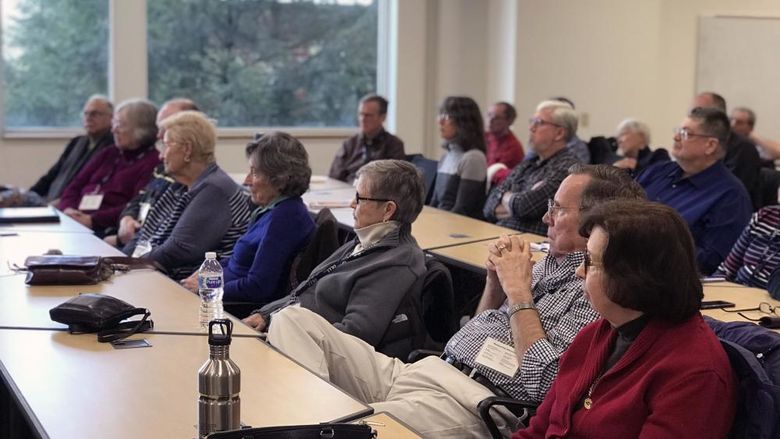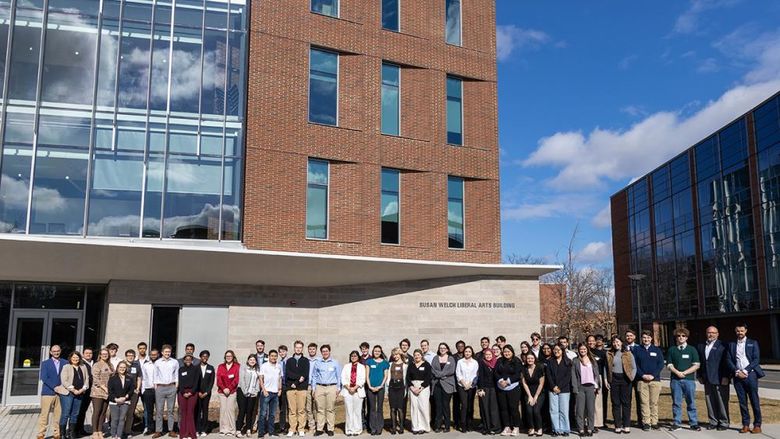
MIDDLETOWN, Pa. – People of color have suffered disproportionately from COVID-19, but this is not surprising, according to members of a panel during Penn State Harrisburg's recent “Health Disparities in the Age of COVID-19” discussion. The panelists said the health industry has long produced worse outcomes for underrepresented populations, adding that it does not have to be this way.
The panel discussion, presented by the Penn State Harrisburg Diversity and Educational Equity Committee and the Penn State College of Nursing, was moderated by Sheldon Fields, associate dean for equity and inclusion in the College of Nursing.
The discussion began with highlighting national statistics that illustrate health disparities based on race, including:
- People of color are five times as likely to require hospitalization from COVID-19.
- African Americans are 13% of the population, but account for 42% of the HIV-AIDS diagnoses.
- Maternal mortality is three times higher for Black women than white women.
- Minorities are twice as likely to have chronic health conditions.
- Babies born to Black mothers are three times as likely to have low birth weight.
Reasons for the disparities go back hundreds of years, the panelists said. They discussed ideas to improve outcomes during the current crisis.
“We're dealing with a pandemic of racism at the same time as COVID,” Fields said. “COVID has deepened and sharpened the disparities.”
Panelists said many complex factors lead to the differences in health outcomes between people of color and the white population.
Poverty is a major factor, according to David Saunders, director of the Office of Health Equity at the Pennsylvania Department of Health. Black employees earn $18,000 less per year in Pennsylvania than white employees. Lower income leads to less flexibility in seeking healthcare, fewer chances for recreation, worse nutrition, and more risky behaviors like alcohol and drug use, said Saunders.
One in four Latinos have low-wage jobs, and many of them are on the front lines, with more exposure to the virus, said Raffy Luquis, associate professor in Penn State Harrisburg's School of Behavioral Science and Education.
“The janitors, the cafeteria workers, the grocery store employees — they are on the front line, but we forget about them,” he said. “Or the migrants in the fields — they are growing our food, but they have no access to healthcare.”
Saunders said some minorities do not trust the medical profession. “Centuries of racism left deep scars,” he said. “Institutions have historically devalued their concerns.”
Dr. Johanna Vidal-Phelan, senior medical director of pediatrics at UPMC/Hamilton Health, said minorities also are underrepresented in the health care professions — only 5% of doctors are Latino.
Just as the causes of health disparities are complex, solutions to the COVID-19 crisis must also be, panelists said.
Sheetal Gade, registered nurse practitioner at Penn State Health, said telemedicine could help dispel some of the inequalities. By contacting their medical providers through the Internet, essential workers would not need to take more time off or find transportation. Easier access to healthcare providers would help them keep chronic diseases under control.
But telemedicine is not an option for people without internet access. Gade said some hospitals have given patients pre-loaded, hand-held devices which connect them directly to their doctors. Ultimately, better communication means better outcomes, Gade added.
Saunders said improving trust in medical providers means finding trusted messengers, like those in the faith-based community or even white allies who have “been in the trenches, working with underserved populations.”
“You can't build trust with someone you just meet. You must earn trust, and that takes time,” he said.
Vidal-Phelan said minorities in the medical professions should mentor students of color to encourage them to go into medical careers. Saunders suggested paid internships and reaching out to students as early as middle school.
Vidal-Phelan also said she has seen progress in the past year or two, as more medical staff is trained in cultural understanding and the needs of communities of color.
Panelists said collaborations between community leaders, medical personnel and patients can lead to improvements.
“There is still an opportunity for us to write a different story, if we do all we can to make the situation right,” Saunders said.





